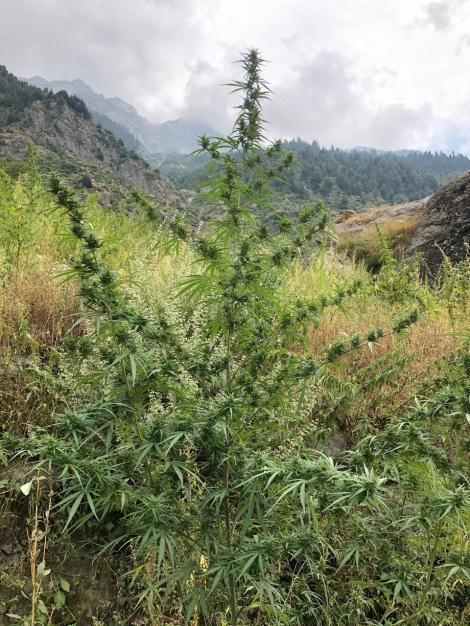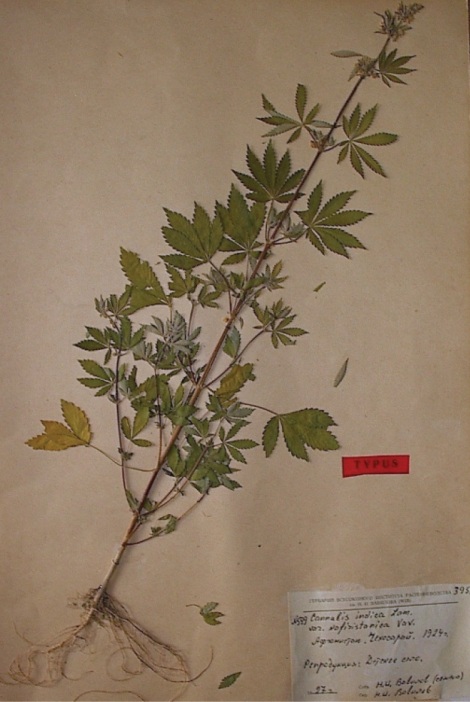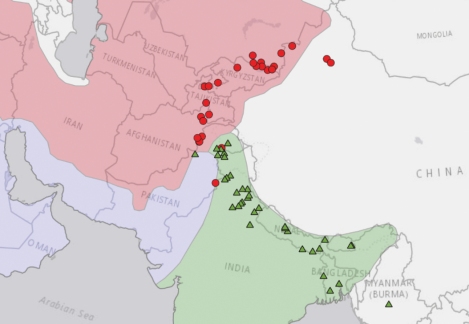After posting ‘On Indicas and Afghanicas’ I then discover that on April 3rd 2020, John McPartland and Ernest Small already published a new taxonomy for Cannabis. Crucial reading, it’s entitled A classification of endangered high-THC cannabis (Cannabis sativa subsp. indica) domesticates and their wild relatives, and it’s available for download here. The supplementary material is available here.
On the Indica versus Sativa narrative, which is what’s likely to be of most interest to aficionados, a quick summary is as follows:
At least 32,600 years ago, truly wild ancestral populations of subsp. indica diverged into two distinct groups, driven by climatic conditions in South and Central Asia. Respectively, these were var. himalayensis and var. asperrima. Adaptation then caused their habitat isolation, creating a reproductive barrier.
Subsequent domestication (i.e., selection by humans) drove their further divergence into Indicas (var. afghanica) and Sativas (var. indica). The terms Indica and Sativa can be used accurately to refer to some original Asian domesticates (“landraces”), but not to describe modern hybrid slop. Though note that many landraces are hybrids between these two formal botanical varieties.
The wild-type populations, var. himalayensis and var. asperrima, are invaluable reservoirs of biodiversity. Their importance for the future of Cannabis cannot be overstated. They are critically endangered and urgently need to be preserved in seed banks.
The new study is an essential read. The abstract is as follows:
Abstract
Two kinds of drug-type Cannabis gained layman’s terms in the 1980s. “Sativa” had origins in South Asia (India), with early historical dissemination to Southeast Asia, Africa, and the Americas. “Indica” had origins in Central Asia (Afghanistan, Pakistan, Turkestan). We have assigned unambiguous taxonomic names to these varieties, after examining morphological characters in 1100 herbarium specimens, and analyzing phytochemical and genetic data from the literature in a meta-analysis. “Sativa” and “Indica” are recognized as C. sativa subsp. indica var. indica and C. sativa subsp. indica var. afghanica, respectively. Their wild-growing relatives are C. sativa subsp. indica var. himalayensis (in South Asia), and C. sativa subsp. indica var. asperrima (in Central Asia). Natural selection initiated divergence, driven by climatic conditions in South and Central Asia. Subsequent domestication drove further phytochemical divergence. South and Central Asian domesticates can be distinguished by tetrahydrocannabinol and cannabidiol content (THC/CBD ratios, ≥7 or <7, respectively), terpenoid profiles (absence or presence of sesquiterpene alcohols), and a suite of morphological characters. The two domesticates have undergone widespread introgressive hybridization in the past 50 years. This has obliterated differences between hybridized “Sativa” and “Indica” currently available. “Strains” alleged to represent “Sativa” and “Indica” are usually based on THC/CBD ratios of plants with undocumented hybrid backgrounds (with so-called “Indicas” often delimited simply on possession of more CBD than “Sativas”). The classification presented here circumscribes and names four taxa of Cannabis that represent critically endangered reservoirs of germplasm from which modern cannabinoid strains originated, and which are in urgent need of conservation.

Wild-growing Cannabis sativa subsp. indica var. himalayensis, northern Pakistan, 2019

Type specimen for Cannabis sativa subsp. indica var. asperrima. Originally collected in Kunar Valley in 1924 by Nikolai Vavilov and used as a type specimen for his proposed taxon Cannabis indica var. kafiristanica.

Distributions of herbarium specimens. Red circles: var. asperrima. Green triangles: var. himalayensis. Their interface is in northern Pakistan, roughly around the Kunar/Chitral River watershed. Red area: Irano-Turanian region. Green area: Indian region. Lilac area: Saharo-Sindian region.

Pingback: Landraces: 10 False Claims from Page 1 of Google | The Real Seed Company Blog·
Pingback: Nanda Devi: Landraces and Tall Tales from the Himalayas | The Real Seed Company: The Honest Online Source for Cannabis Landraces Since 2007·
Pingback: Endangered Varieties of subsp. indica: A Few Thoughts | The Real Seed Company: The Honest Online Source for Cannabis Landraces Since 2007·
Top
Pingback: New ‘Curious About Cannabis’ Episode on Endangered Asian Cannabis Populations | The Real Seed Company: The Honest Online Source for Cannabis Landraces Since 2007·
Pingback: Extinction by Hybridization | The Real Seed Company: The Honest Online Source for Cannabis Landraces Since 2007·
Pingback: On Indicas & Afghanicas | The Real Seed Company: The Honest Online Source for Cannabis Landraces Since 2007·
Very creeative post